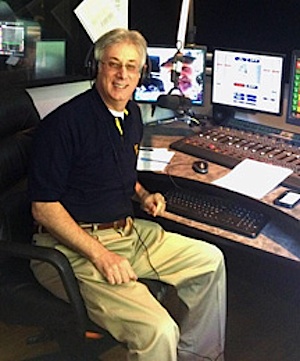

Charlie Cook
About six weeks ago I wrote about the incredible summer country music stations had in 2013. At the time I attributed some of that success to the amazing tour schedule this year by superstars like Jason Aldean, Taylor Swift, Brad Paisley, Kenny Chesney and Blake Shelton. I don’t remember a year when fans could experience this much live music over a few weeks time.
Not only were the headliners creating this excitement but up and down the roster of opening acts legitimate superstars were coming to the market. Miranda Lambert, Jake Owen, Eric Church, Chris Young and on and on. It was one of those summers where, if you lived in a major market, you could stand still and watch the Top 40 come to life every weekend.
WKLB shot to the top of the PPM ratings in Boston for the first time during the summer, enjoying their best ratings ever. WYCD in Detroit, which has often been the number one station in town, too had a great couple of months while country concerts dominated second only to the Tigers. The same for Pittsburgh and WDSY.
I know having the performers come to town brings with it extra effort on the programming and promotion staffs and this extra effort is what drove the ratings, but at that time I wondered if the live performances or the strength of the music itself was the driver. I said I thought it was more the live music.
Now to be fair, many country stations, in PPM markets, did gangbuster this Summer and even markets where the superstars did not visit did well. The summer Nielsen Audio ratings are now in for diary markets and the results are more mixed than in PPM markets. Many things play into this.
First PPM, even with the limited amount of meters in the market, is much more reliable (and of course immediate) than the diary system. I am becoming more and more disenchanted with the diary system as Nielsen Audio struggles with finding people (under 50) willing to keep the diary. Add to this the challenge of having listeners keep an accurate record of their habits.
What did you have for lunch Tuesday? What station did you listen to from noon to 3 p.m.? What time did you get home Monday night? What was the final score of the Vikings/Giants game? (Yeah I know, who cares?)
There were 55 diary markets reported for the summer book that had Country stations in them. In those 55 markets I counted 89 country stations. Thirty-six of them were down and 44 were up. Many stayed the same. Some markets, like Tulsa and Albany, saw all three of their stations go up. Quite a feat that speaks to the format itself. Nine markets, each with at least two stations, saw all of the stations fall.
As an aside Jackson, Miss. went from 12 percent of the audience listening to Country music to 9.4 percent listening. Really? Have you been to Jackson? Do you really think less than 10 percent of the people in Jackson listen to Country music? It’s friggin’ Mississippi. Do you think Nielsen Audio needs to improve their measurement system in Jackson? That is the problem with diary measurement. But if we look at all 55 markets maybe we can get a feel for the format’s strength this past summer in smaller markets.
I wish the excitement of the live performances could trickle down to markets like Jackson, Dayton and Grand Rapids. I have a tendency to tell programmers to find a way to make similar excitement on the air but this may be easier said than done. There are a number of superstars bring their own excitement. This has been a good music year for a handful of big acts but what about all of the new acts that are not yet established on the radio? With Thomas Rhett being on the Aldean tour, this was a real boost for building his familiarity in the larger markets the tour played, but I wonder how that translates to smaller markets who have yet to see how exciting an act his really is.
This might also be the biggest year for new acts hitting the top of the charts. I’m not sure if the listener can differentiate between Rhett, Brett Eldridge, Tyler Farr, Eric Paslay, Charlie Worsham , et al. Now it is incumbent on the record companies and radio stations to make these acts as familiar in the smaller markets as in the large ones. This will help drive ratings everywhere.
(The views expressed in this article are those of the author and do not necessarily reflect those of MusicRow.)



